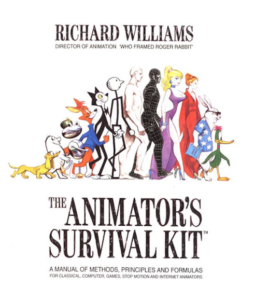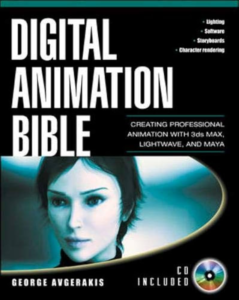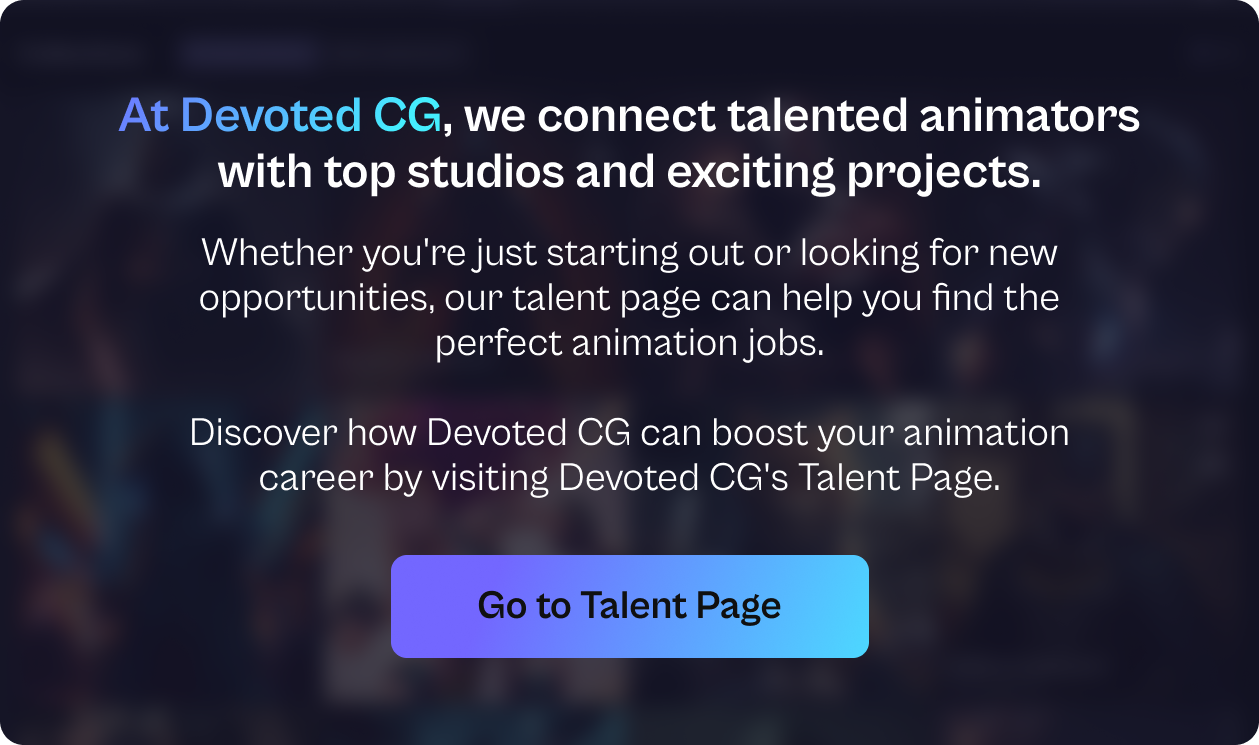Have you ever wondered how your favorite animated movies and games come to life? Behind every movement of charming characters and breathtaking scenes is a talented animator.
We at Devoted СG realize that the demand for high-quality animations in films, video games, advertising, and other media continues to grow. According to the United States Bureau of Labor Statistics, careers for animators are expected to increase by 4% from 2018 to 2028, which is the same as the average for all jobs in the U.S. (Best Colleges, 2019). So by means, the career prospects for animators are more promising than ever.
If you dream of creating art through animation, this article will show you the way. We will explore the different types of animators, the steps on how to become an animator, and the tools you will need to succeed in the animator career.
There Are a Few Types of Animators. What Are They?
Animation is a diverse field with their own specialized roles, and it is more than 2D or 3D animators, but regardless what they are, they all help to bring stories to life through pictures and movement. But what makes them different?
- Create animations in a two-dimensional space.
- They draw each frame by hand or use digital tools like Adobe Animate or Toon Boom Harmony to create flat images.
- Their job involves a lot of drawing and understanding how characters move.

- Create animations that have depth and look more realistic.
- They use computer software like Autodesk Maya and Blender to build and animate 3D models.
- Need to know how to model, rig, and render their characters, objects, or scenes to make them look lifelike.

Just like many other careers, A typical animation career path starts with entry-level positions and progresses to more senior roles. Here’s a look at how your career in animation might develop: Begin as a junior animator or animation assistant, where you will support senior animators and work on smaller tasks to build your skills and experience. As you progress, advance to roles such as animator or character animator. Here, you’ll take on more responsibility, creating important animations and refining scenes to enhance their impact and storytelling. With more experience, aim for senior roles like senior animator, lead animator, or animation director. In these positions, you’ll lead teams, make creative decisions, and make sure the overall quality of the final animated product meets high standards. Consider specializing in areas like character animation, environment design, or visual effects to broaden your animation career prospects. Specialization allows you to focus deeply on specific skills and interests within the field. On the other hand, freelance work offers more flexibility and autonomy. Freelancers typically have the freedom to choose projects that align with their interests and expertise. They may collaborate with studios, production companies, or directly with clients to create animations tailored to specific needs. This independence allows 3D freelance animators to showcase their creativity and technical proficiency while building a diverse portfolio of work across various platforms and mediums. There is no shortcut to becoming an animator, there is always a process that everyone who wants to start their animation career to undergo. Whether your goal is to specialize in 2D animation or other animation specialties, the journey may not be easy, but there are always pathways forward. As our 3D Animation Lead, Marcelo William, said, “Animation is a long journey, so be patient.” Reflecting on his own experiences, Marcelo shared, “I recently had the chance to hang out with John Musker, one of the great animators of our generation. He’s the director and writer of some of my favorite Disney films like Moana, Treasure Planet, and other Disney classics. He shared his story about applying to Disney, getting rejected, going back to school, and reapplying—I admire his persistence. He talked about his journey from intern to director and how the legendary ‘Nine Old Men’ of animation—the creators of the book The Illusion of Life and the animators behind many great Disney movies—taught him the craft. Even at 70 years old, he still has a passion for animation and continues to work in the field.” Marcelo concluded, “So, be patient, don’t rush things, and enjoy the journey.” To become an animator, formal education is often beneficial, though not always required. Many animators pursue degrees in animation, graphic design, or fine arts, which give them the essential skills in traditional and digital animation techniques. Schools and colleges worldwide offer specialized courses that cover everything from foundational principles to advanced digital tools used in animation production. Staying in parallel with industry trends and continuously honing your skills through workshops, online courses, and networking events is vital for your animation career growth. Devoted understands that continuing your education and staying updated with industry trends is crucial. So here are some helpful resources to help you kickstart your animation career. A comprehensive guide to animation techniques. Gives you a look into the principles of Disney animation. Insights into digital animation production. To succeed as an animator, you need a mix of artistic and technical skills. Here are some essential skills and how to develop them: Here are some of the top animation software used by professionals in 2024: Career in animation offers many different paths, each needing special skills to bring stories to life. Whether you dream of drawing 2D characters or creating special effects, animation welcomes creativity and hard work. By learning animation, keeping up with new ideas, and practicing your skills, you can start a great career in this exciting field. Follow your passion for animation and discover the opportunities waiting for you.


What Does the Animator Career Path Look Like?
Entry-Level Positions
Mid-Level Positions
Senior-Level Positions
Specialized Roles
How to Become an Animator?
Education and Training
Online Courses
Books and Tutorials



Skills and Experience
Key Animation Software
Related
Did you like the article?


